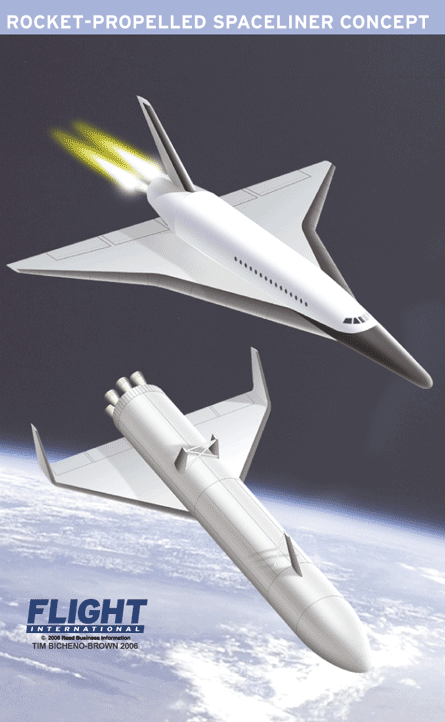By Rob Coppinger in London
A 50-passenger reusable two-stage-to-orbit (TSTO) rocket for long-haul flights is the subject of conceptual and technology studies by German aerospace centre DLR's space launcher systems analysis group.
DLR researchers think suborbital tourism launch systems could be applied to the intercontinental transport market. The liquid oxygen/liquid hydrogen-propelled concept vehicle, called Spaceliner, could operate a daily return service to Australia and have a reusable life of 150 trips, with new engines every 25 flights. "Vertically launched, the Spaceliner would take less than 90min to fly a route from Europe to Australia," says DLR.
Around 160s into the ascent the first-stage booster and second-stage spaceplane separate. The first stage is a flyback propellant tank that provides fuel for the spaceplane's engines. After separation, the spaceplane accelerates for a further 260s until main engine cut-off. On reaching the 110km (70 miles) apogee of its ballistic trajectory, passengers would experience 200s of weightlessness.
DLR research shows that a direct re-entry would generate thermal loads too great for the reusable passenger transport. Instead it is proposing a skipping trajectory to reduce heat loads, but even this will need new thermal protection technology.

Source: Flight International
















